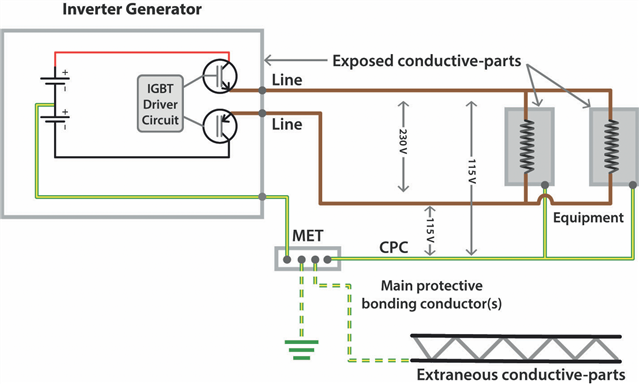Hi,
I found the below image on an IET forum.

The voltage potential between L&N (well, line and line) is 230V, with the voltage between each of these lines and the CPC sitting at 115V.
The article states this is a TN-S earthing arrangement if a reference to earth is made using a rod, however I note there is no N-E relay/bond.
Can anyone confirm this is correct and that this is indeed a TN-S earthing arrangement?
Will RCDs connected to the output of the supply operate correctly, I presume so because current can flow between line(s) and CPC.
Thanks.
